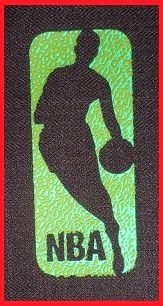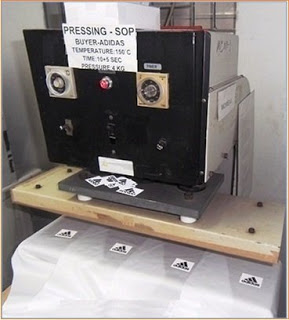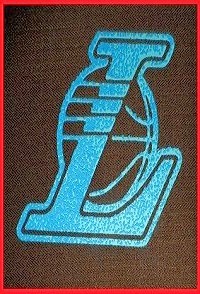 Printing is referred to as controlled placement of color, design, motif, pattern etc. on a piece of fabric. Printing finds popular application both in knitting and woven garments. With printing, garments look colorful, smart a beautiful. Printing can add great value to the clothes. If a product asking value is $10, then the contribution of print and embroidery is, at least, $2. That means if print and embroidery do not exist, those can be sold by $8. Printing sector is growing by amplifying beautification of garments and to added value add service. So we can easily realize the significance and value-add service of these supporting industries in the apparel industry is inevitable.
Printing is referred to as controlled placement of color, design, motif, pattern etc. on a piece of fabric. Printing finds popular application both in knitting and woven garments. With printing, garments look colorful, smart a beautiful. Printing can add great value to the clothes. If a product asking value is $10, then the contribution of print and embroidery is, at least, $2. That means if print and embroidery do not exist, those can be sold by $8. Printing sector is growing by amplifying beautification of garments and to added value add service. So we can easily realize the significance and value-add service of these supporting industries in the apparel industry is inevitable.
Printing is an essential, ornamental artwork consisting of designs worked on fabric either by hand or machine. Printing plays an important role to make a garment product. It is much essential to decorate a garment. It has to be set on a particular garment zone according to buyer’s expectation. It also makes the apparels more gorgeous to customers. Currently most of the ready-made garments made with different kinds of printing task. Every buyer has a different logo or Icon. Usually, buyer wishes to have an attractive embroidery design or logo on their product. That design or logo represent buyers slogan.
The colorant is first prepared in the form of a paste and applied to the fabric in
various ways:

(1) Direct printing (2) Discharge printing (3) Resist Printing
(4) Transfer Printing (5) Flock Printing (6) Pigment Printing
(7) Lacquer Printing (8) Warp Printing
(9) Manual Printing,
(10) Roller Printing (11) Screen Printing.
We can discuss issues relevant to printing on clothing and fabrics. Printing on textiles can be done by hand with screens and squeegees or on complex textile printing machinery. Let’s discuss printing techniques, printing machinery as well as local printers and different garment printing factories and more. The goal of this discussion is to help each other to learn more about the craft of textile printing. Let’s find out how to make great print designs on our fashion and complete our projects profitably.
1) Direct Printing/Overprinting: In this method, the printing paste is applied directly onto the prepared surface of the fabric. Overprinting implies that a plain dyed fabric is printed with a pattern in a darker color.
2) Discharge Printing: A plain dyed fabric is overprinted with a discharge paste which destroys or decolonizes or makes a change in the color of the dye. A white discharge is when the original white is restored to the printed area. A color release is when a separate color is applied at the same time as the discharge paste.
3) Resist Printing: This is when a white fabric is printed with a resist paste. One subsequent dyeing the printed area is not colored. Resist areas can also be white or colored.
4) Transfer Printing: The design is first applied to a particular type of paper with a certain kind of dye paste. These are individual papers. The pattern is transferred & applied onto the fabric with the aid of a heated calendar.
The temperature is high enough to cause the dye staff to pass into the vapor phase (Sublime). Since it is held in proximity to the paper, under pressure, some of the dye vapor find its way onto the fabric and defuses into the fibers. The process represents about 6% of print production and finds it’s most direct and simple application on synthetic fiber textiles. Special techniques, paper, and fiber preparation have been developed for natural fibers and blends.
5) Flock Printing: Velvet-like appearance is obtained to the print by electrostatic flocking. There the fibers snippets are caused to stand upright in an electrostatic field as they are being applied.
6) Pigment Printing: Pigments are unique colors. They do not dissolve and penetrate into the fibers. They are applied together with a film forming the binder. More than 50% of all printing colors are pigment type.
7) Lacquer Printing: A pattern is made by printing the fiber with a colored resin. It forms a shiny film.
8) Warp printing: Before weaving a pattern is printed onto the warp sheet. After weaving the design is subdued and shadowy, without a distinct outline. It also called chine or shadow print.
9) Hand Printing: This is the most primitive method of printing but it is now seldom used. The printing paste is applied using a wooden block, which carries the design in relief, or by a stencil.
10) Roller printer:This is the oldest mechanized method of continuous printing. But now it represents only about 15% of print production. The method is now on the decline. Roller printing can produce sharp outlines to the printed pattern. This feature is especially important for small figures. The maximum design repeats are the circumference of the engraved roller. The design is engraved on copper rollers. One roller is designated for each color. The rollers are mounted on the large main cylinder, around which the fiber travels together with a resilient blanket and a protective back gray. The printed paste is located in a trough.
A transfer roller runs partly immersed in the glue and contact with the engraved roller. A doctor blade scrapes away the entire adhesive except for that contained in the engraving. A cleaning blade on the other side scrapes away any lint picked up from the fabric. The pressure of the engraved roller against the fabric causes the design to be transferred. Any excess paste which is squeezed through the fabric is taken up by the back gray. It protects the blanket and prevents the design from being smeared.
11) Screen Printing: Screen printing (flat and rotary) is the most important printing method nowadays. It is straightforward and easy than among all other printing methods. This process currently makes substantial print production. The design is formed on a screen by blocking off those parts of the screen where no Printing is to occur.
The screen is coated with a light-sensitive polymer and then selectively exposed through a stencil. Exposed areas are made insoluble; unexposed areas are washed away. A modern alternative is to coat the screen with an insoluble polymer which is then selectively etched away by a computer is driven laser beam. A separate screen is required for each color. The maximum design repeat is the size of the screen, which can be much larger than an engraved roller.
Screen Printing Process: Screen printing is a printing technique that uses a woven mesh to support an ink-blocking stencil i.e. thin sheet in which a pattern is cut, placed on a surface and printed or inked over etc. to reproduce the pattern.

The printing process may be a manual operation or carried out with varying degrees of automation. Garments or garment components are precisely placed on a palate. Sometimes an adhesive spray is used on the palate to ensure stable placement of the item to be printed.
A screen for each color in the design is loaded onto a rotating carousel. An operator lowers each screen one at a time in a predetermined sequence, over the garment on the revolting palette. A sequence is used to force a thick, viscose ink through the screen and onto the garment. For multi-color designs, the ink may be partially cured (flashed) between applications to eliminate discoloration or smearing.
Inks are cured by exposing them to heat, usually between 300 and 350 degrees Fahrenheit. Heat softens resin particles and causes them to swell. Resins absorb liquid around them and meld together to form a film.
Ink curing time and the amount of heat required vary with each brand of ink, amount of ink applied to a garment, blend of ingredients and the type of drying oven. Light color ink may require more heat than darker inks due to reflection characteristics. Garment color may also alter curing time. Curing can be tested by stretching the printed design forcefully. If cracks appear or the film crumbles or smears when rubbed, the film is under cured.
By reading above finally, we can realize that screen-printing is a process where any design, drawing, artwork or another format is transformed into a film, and the film is converted to a screen. The number of screens for any design is based on the number of colors of the design. Relations are then transferred to the screen to the garment in a proper order to achieve the desired result. The process involves exact pressures, specialized links and heat curing to result in a sustainable design.
If you become satisfied by reading this post; you can show your regards by spreading it in social media such as Facebook, Twitter, Google+ or share it in stumble-upon by hitting like button. Stay tuned with us for more updates.
 Printing is referred to as controlled placement of color, design, motif, pattern etc. on a piece of fabric. Printing finds popular application both in knitting and woven garments. With printing, garments look colorful, smart a beautiful. Printing can add great value to the clothes. If a product asking value is $10, then the contribution of print and embroidery is, at least, $2. That means if print and embroidery do not exist, those can be sold by $8. Printing sector is growing by amplifying beautification of garments and to added value add service. So we can easily realize the significance and value-add service of these supporting industries in the apparel industry is inevitable.
Printing is referred to as controlled placement of color, design, motif, pattern etc. on a piece of fabric. Printing finds popular application both in knitting and woven garments. With printing, garments look colorful, smart a beautiful. Printing can add great value to the clothes. If a product asking value is $10, then the contribution of print and embroidery is, at least, $2. That means if print and embroidery do not exist, those can be sold by $8. Printing sector is growing by amplifying beautification of garments and to added value add service. So we can easily realize the significance and value-add service of these supporting industries in the apparel industry is inevitable. The printing process may be a manual operation or carried out with varying degrees of automation. Garments or garment components are precisely placed on a palate. Sometimes an adhesive spray is used on the palate to ensure stable placement of the item to be printed.
The printing process may be a manual operation or carried out with varying degrees of automation. Garments or garment components are precisely placed on a palate. Sometimes an adhesive spray is used on the palate to ensure stable placement of the item to be printed.


Leave a Reply
You must be logged in to post a comment.